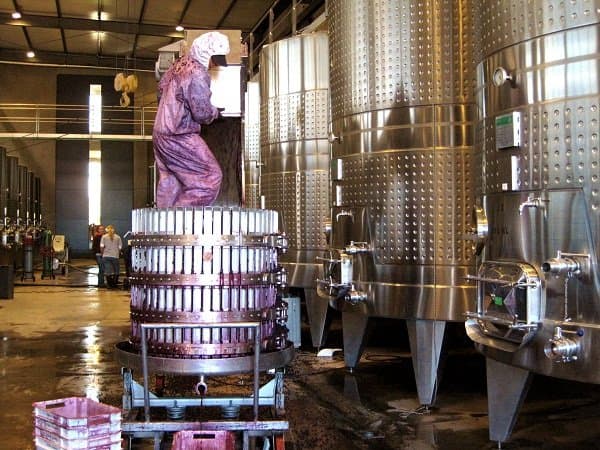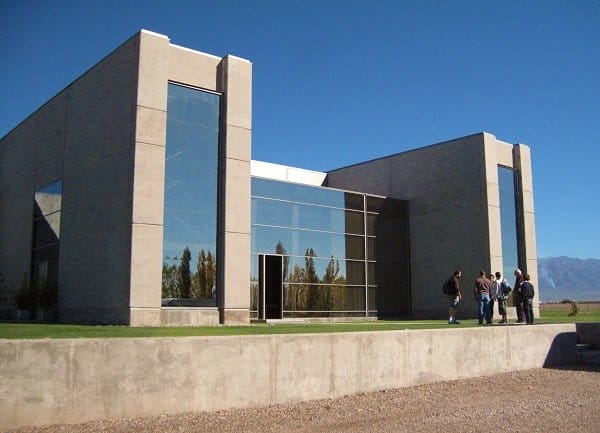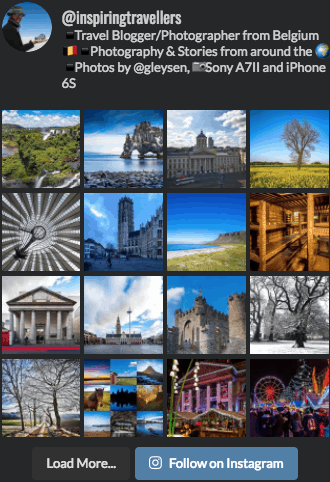Malbec. The name can only invoke a mood that is dark, sultry and sensational. Living in Australia we don’t often have the chance to indulge in its passionate intensity and we’ve been sure to drink our share in Argentina. So a trip to the country’s wine capital was always on our itinerary. Never mind that it’s located in the desert, far away from other popular tourist destinations. A trip to Argentina is not complete without a visit to the pleasant city of Mendoza, with its abundant restaurants, trees, plazas and, of course, wineries.
Arriving on a Saturday, we were surprised that most of the wineries are closed on the weekend. We quickly learned that the scene is a bit different here than in Australia, New Zealand and the United States. Locals don’t visit the wineries as a hobby like we do, stocking up on cases of wine to bring home. In fact, wine consumption in Argentina is declining overall as beverage options increase, such as craft beer and Fernet (which we haven’t tried yet and aren’t sure we want to). The number of premium wine drinkers, on the other hand, is increasing, with visitors from Buenos Aires, Brazil and overseas flocking to Mendoza to taste its offerings.
A variety of wine tours are available in Mendoza, from guided trips to do-it-yourself bike tours, which sounded fun to us in theory. We really wanted to experience the region’s high-end wines, however, so we booked a day with Trout & Wine Tours. Mendoza has three wine areas: the original Jesuit founded Maipú, contemporary Valle de Uco and Luján de Cuyo. Our tour took us to the latter on a gorgeous Autumn day, though we discovered that we really needed at least three days of touring to do Mendoza’s wine regions justice. That fact was quickly forgotten as we smiled on our fortune at being around for production time at the wineries. Usually we catch them before or after the harvest so we were thrilled to see some winemaking in action.
Luján de Cuyo is known for Malbecs and was the first recognised wine-producing appellation in Argentina. As we drove into the area we learned a little about the canals and irrigation system that ensure each vineyard gets its share of water from the dams, which capture the melted snow from the mountains. We also learned about how the different micro-climates and elevations in the three areas affect the grapes. Higher altitude causes large differences in the temperature from day to night. This results in the grapes thinking that they are going to die so they develop harder skins. Grapes grown in high-altitude Uco have the hardest skin, while those in Luján de Cuyo develop a harder skin than those in Maipu. Most wineries plant vineyards in each of the three areas to take advantage of this diversity, resulting in more complex wine characteristics when blended.

We were surprised to find this man in a protective bodysuit sorting the grapes with his feet to make them even for pressing.
We visited four wineries on our day out and were given a tour of the premises at three of them. The first was Achaval Ferrer, which produces mostly Malbec wines. The only wine we were really crazy about was their 2006 Quimera. Next it was on to Viña Cobos, where we tasted an excellent Chardonnay, a Merlot, a Cabernet Sauvignon and a Malbec. A few people in our group paid extra for a flight of top-quality Malbecs. I snuck a taste of the Bramare 2007 Malbec from the couple next to me and we promptly bought a bottle. This winery was the premium standout. With California winemaker Paul Hobbs as one of the owners we had high expectations and were not disappointed by their four different ranges.
Our third stop was for a five-course lunch with wine pairings at Bodega Ruca Malen. I’ve written a separate post about this experience so be sure to click through to read about it. Finally, we finished our day at Clos de Chacras, a historical winery first established in 1921. We found some delicious wines here, including a Malbec and a couple of intriguing blends. We left with a bottle of their 2005 Gran Estirpe.
Despite winery visits becoming somewhat of a new phenomenon, Mendoza wineries certainly know how to host properly. Every place we visited had tables set with water, personal spittoons, white mats (for examining the colour of the wine) and often cheese and crackers. Most importantly, the generous tastes were served in the proper large red wine glasses. I cringe when red wine is served in those tiny tasting glasses we sometimes find in Australia and New Zealand. The atmosphere was always communal, our group seated around a large table so that we could enjoy discussions about the wine. We were never rushed, which is a very Argentine quality; these are people who enjoy savouring the finest things in life: food, conversation, company and wine, of course.
Getting there: Visitors can reach Mendoza by plane or a 14-hour bus ride from Buenos Aires. Buses are also available from other cities. Hotels and hostels are abundant. Restaurants can be hit or miss. Pick up a free copy of the Wine Republic magazine (English language) for listings of the best bets in food and wine. Nightlife is situated along Avenue Villanueva, while nightclubs have been (stupidly) placed out of town in Chacras. Wine shops sell special styrofoam boxes for carrying wine home as it is very expensive to ship it overseas.
Do you enjoy wine tours when travelling? What has been your favourite region?
You may also enjoy these similar posts:
- 30shares
- Share on Facebook
- Pinterest5
- Tumblr
- Evernote




